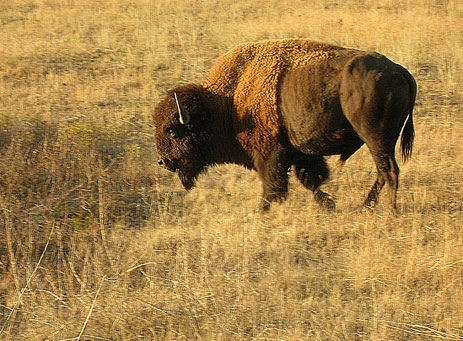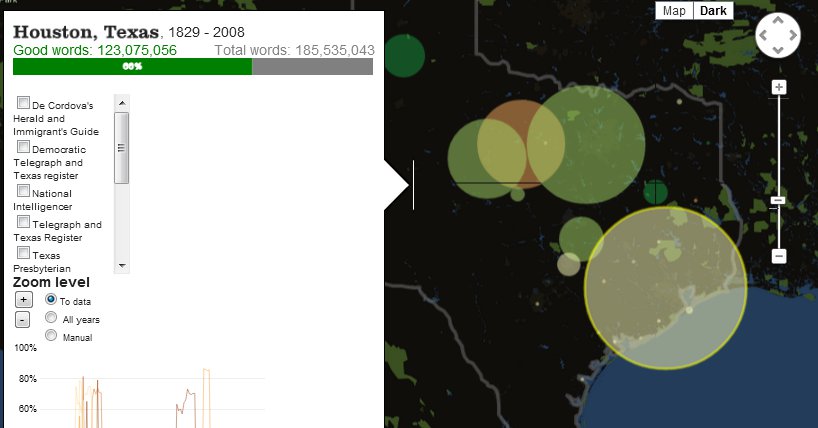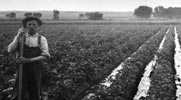Dedicated to advancing scholarly and public understanding of the past, present, and future of western North America, the Center supports research, teaching, and reporting about western land and life in the United States, Canada, and Mexico.
Bruce Cain to Join Center as Faculty Director
 The distinguished political scientist Bruce E. Cain will join the Bill Lane Center for the American West as its next faculty director. Professor Cain will succeed the Center's founding faculty director, historian David M. Kennedy, and will be tasked with carrying on the Center's study of the past, present and future of the American West.
The distinguished political scientist Bruce E. Cain will join the Bill Lane Center for the American West as its next faculty director. Professor Cain will succeed the Center's founding faculty director, historian David M. Kennedy, and will be tasked with carrying on the Center's study of the past, present and future of the American West.
Professor Cain brings a wealth of experience in U.S. and California politics. A pioneer in computer-assisted redistricting, he is a well-known expert on elections, term limits, polling, and the relationships between lobbyists and elected officials. He is a frequently cited source in media coverage of politics, recently discussing the 2012 presidential race on KQED Radio's "Forum."
"The scholarly community has long recognized Bruce as the preeminent authority on the political culture, institutions and behavior of the western region, and he is well known to a broader public as an unfailingly clear and trenchant commentator on western politics and public policy," said outgoing director Kennedy. "Stanford and the Bill Lane Center – and the wider West – will all benefit from his deepened engagement with those issues as Lane Center director. We had many strong candidates to take over leadership of the Center, but none brought the rich portfolio of creative academic accomplishment, media savvy, passion for the region and its future, and successful leadership experience that are Bruce's hallmarks. He could not be more welcome."
Professor Cain comes to Stanford after more than two decades at U.C. Berkeley, where he ran the university's Institute of Governmental Studies, and later the U.C. system's Washington Center, an instructional and research program in the nation's capital. In addition to serving as faculty director, he will be joining the political science faculty as the Charles Louis Ducommun Professor in Humanities and Sciences. He has been frequently honored for his teaching and public service, and was elected to the American Academy of Arts and Sciences in 2000. He is also the author of such books as The Reapportionment Puzzle (1984), The Personal Vote (1987), written with Stanford professors John Ferejohn and Morris Fiorina, and Congressional Redistricting (1991) with David Butler. Professor Cain holds a PhD from Harvard University and a BA from Bowdoin College, and he was a Rhodes Scholar at Oxford Unversity.
"I look forward to leading the preeminent center for western U.S. studies in America," says Professor Cain. "I want it to support innovative, high quality interdisciplinary research and to develop the next generation of western leaders from Stanford's talented pool of students. Leaving Cal after so many years was hard, but I pledge to sit in the neutral section at the Big Game and never to shout 'go Bears' while on campus."
Professor Cain will join the Center full time in the summer of 2013, after completing a fellowship year at New York University's Straus Institute for the Advanced Study of Law & Justice. In the interim period, Professor Kennedy will continue as the Center's faculty director.
Conservation in Action at the American Prairie Reserve

M.S. Earth Systems, 2014
Summer Intern at the American Prairie Reserve
Read about our summer research projects on the OutWest student blog. Throughout the summer, the Center's interns and Research Assistants will be sending in virtual postcards, snapshots and reports on their summer work.
 Last week I made my final trip up to the prairie reserve. On the evening before I left, I went for a run to saturate my senses with the landscape. I eventually came to a valley where I decided to perch on a cottonwood tree and watch the sun go down. I closed my eyes for a few moments, and when I opened them, I saw a buffalo bull a few hundred yards in the distance that must have wandered off on his own. I then turned full circle and realized that I was surrounded by four other bulls that were quickly approaching me. I was overcome with excitement: All of the journals I had read by Lewis and Clark, Edwin Denig, George Catlin and others suddenly came alive, and I imagined an endless grass-filled landscape bursting with millions of buffalo, elk, and antelope and thousands of cougars, wolves, and bears.
Last week I made my final trip up to the prairie reserve. On the evening before I left, I went for a run to saturate my senses with the landscape. I eventually came to a valley where I decided to perch on a cottonwood tree and watch the sun go down. I closed my eyes for a few moments, and when I opened them, I saw a buffalo bull a few hundred yards in the distance that must have wandered off on his own. I then turned full circle and realized that I was surrounded by four other bulls that were quickly approaching me. I was overcome with excitement: All of the journals I had read by Lewis and Clark, Edwin Denig, George Catlin and others suddenly came alive, and I imagined an endless grass-filled landscape bursting with millions of buffalo, elk, and antelope and thousands of cougars, wolves, and bears.
In his book Last Stand, Michael Punke writes, “For emigrants traveling west, sighting the first buffalo marked a signature moment in their voyage – true arrival on the frontier”. Seeing those five buffalo that night represented a frontier for me as well. This frontier is partly physical; I come from mountains and evergreens. Before this summer I had never been to Montana nor had I seen a prairie landscape. In fact, the prairie did not immediately make a big impression on me. At first it seemed like a large expanse of barren nothingness. But then I spent time tearing down a century-old ranch corral, and created just a little more open space so that those bison can roam freely. I also spent a night driving around with a spotlight searching for black-footed ferrets, North America’s most endangered mammal. At 3:30 AM I finally saw a pair of those narrow-set, green eyes peer up at me, and I knew I was seeing one of only 750 in the wild. I came to understand that nature is often invisible to us, but those parts are no less extraordinary than the parts that are conspicuous. I now feel a closer connection to this land than any other I have ever experienced.
Announcing the Thomas D. Dee II Graduate Dissertation Fellowship in the American West

The first-ever Thomas D. Dee II Fellowship will go to Kathryne Young
Thomas D. Dee II, Stanford Class of 1941, had two passions: the American West and Stanford University. The Bill Lane Center for the American West is proud to announce a new fellowship in Dee's honor, the Thomas D. Dee II Graduate Dissertation Fellowship in the American West.
Dee arrived at Stanford in 1937. After growing up in the relatively small town of Ogden, Utah, he had the opportunity at Stanford to meet people from all over the country. Like any first-year student, Dee struggled with homesickness, but he also enjoyed the new exposure to Stanford's community of learning and to broader, national issues. Dee became a Social Sciences major, and he served in leadership roles in Varsity Baseball, the Stanford Glee Club, Scabbard and Blade, and Phi Kappa Sigma fraternity. His son David described Stanford as an eye-opening, life-changing experience: "You know, my Dad, he had a few passions in the world. One of them was certainly Stanford."
The grandson of pioneers, Dee had a deep commitment to the American West. Thomas' grandparents, Thomas Duncombe Dee I and Annie Taylor Dee, settled in Ogden as part of the nineteenth-century Mormon migration to Utah. With the completion of the Transcontinental Railroad in 1869, Ogden became an increasingly important city. Over the years, the Dee family played an important role in Utah's civic and business affairs, including the Utah International Construction and Mining Company.
Dee's sons, David and Thomas, set up the Dee fellowship as a way to honor their father's memory and to further his engagement with Stanford and the West.
As Stanford begins the 2012-13 academic year, the Bill Lane Center for the American West welcomes the first-ever Thomas D. Dee II Graduate Dissertation Fellow, Kathryne Young. Young is a Ph.D. candidate in sociology and also holds B.A. and J.D. degrees from Stanford. Her research focuses on questions of law, gender, and race. She will complete her dissertation during her year at the Center and plans to receive the Ph.D. in June 2013.
Center's "Mapping Texts" Project Presented in Digital Scholarship Journal

Detail from a visualization produced for the Mapping Texts project
Mapping Texts, the Center's recent collaboration with the University of North Texas, is one of several Stanford projects showcased in the current Journal of Digital Humanities, published today. In the article "Building New Windows into Digitized Newspapers," co-authors Jon Christensen and Andrew Torget describe the exciting opportunity and daunting challenge faced by scholars dealing with historical documents like newspapers that have been optically converted into digital texts.
In building Mapping Texts we wanted to create more transparent windows into the extraordinary wealth of information available in online archives of digitized historical newspapers. We wanted, for example, to be able to see how much information was available for any particular time and place, and then measure just how much of that information was still recognizable – and thus useable – after the digitization process. We also wanted to be able to see the major language patterns coming from these datasets, so that we could use “distant” readings of such massive collections as a way to determine which individual newspapers would likely yield the most useful information from “close” readings. We wanted, in other words, more finely grained methods for indexing both the quantity and quality of information in these archives as they spread out across both time and space.
The authors go on to describe the process that led to two interactive visualizations of the University of North Texas' online archive of 232,500 pages: one that allows scholars to assess the optical conversion quality of the collection – where and when are the most reliably readable documents?; the other presenting the results of several natural language processing tools that were used to machine-read the collection.
The journal includes a review of Mapping Texts by the American Studies scholar Robert Nelson, as well as contributions by the Stanford scholars and technologists Matthew Booker on mapping the history of San Francisco Bay, and Elijah Meeks and Karl Grossner on their interactive digital model of the Roman world.





